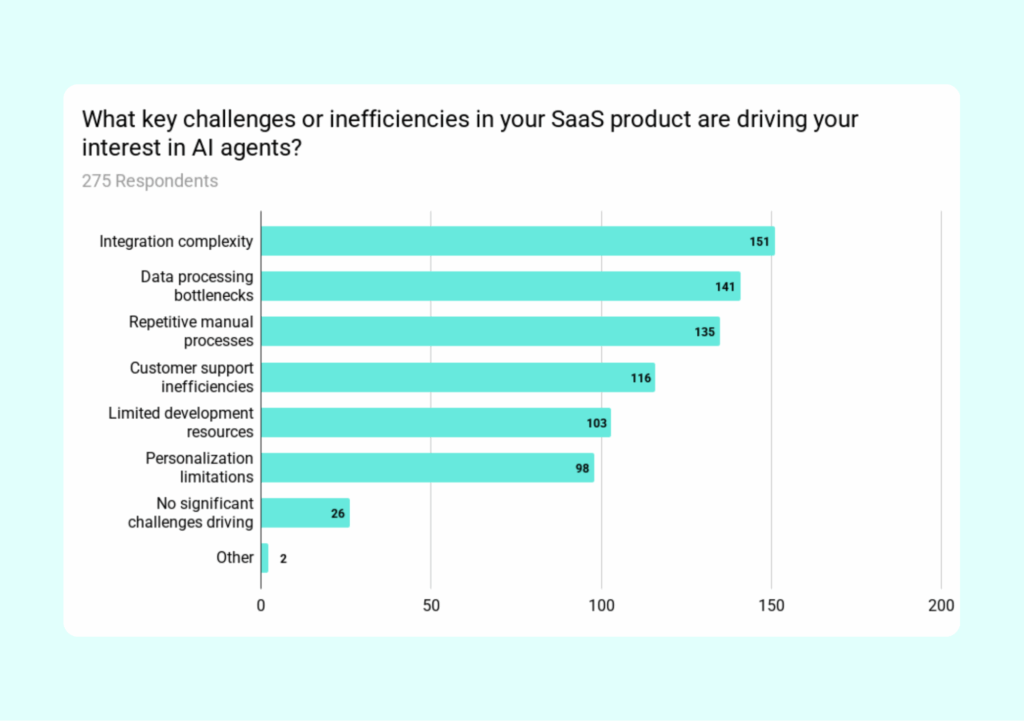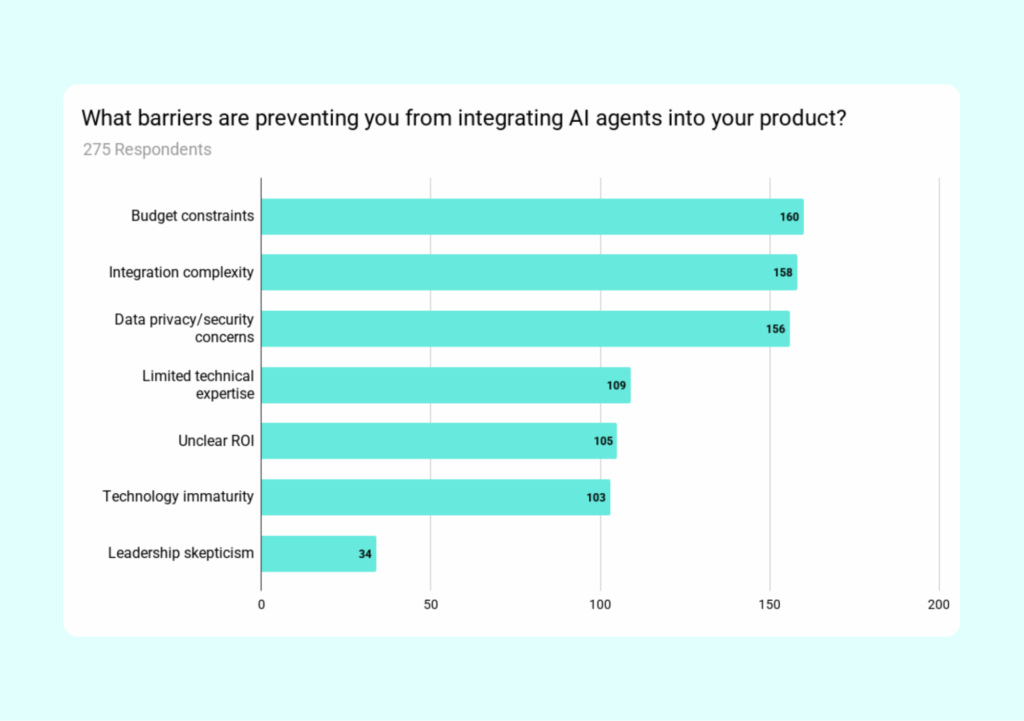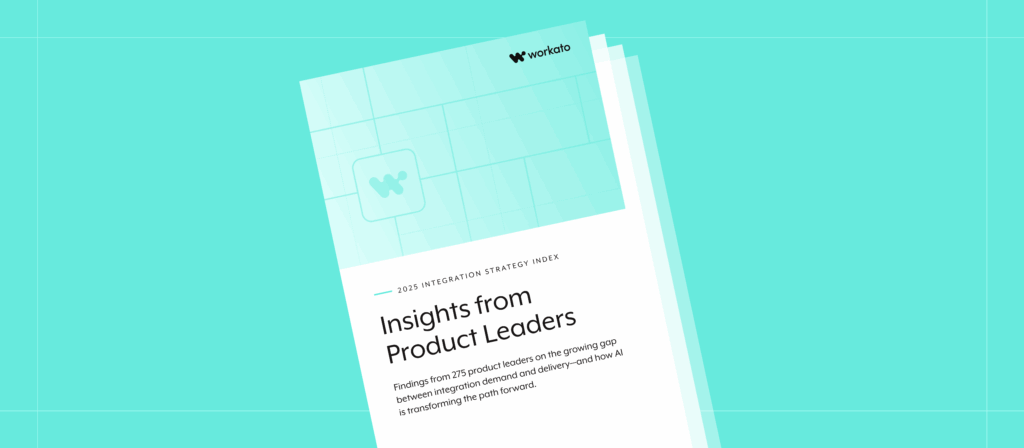AI is positioned as the answer to every product problem, and integration challenges are no exception.
But while everyone’s betting on AI, no one has really cracked the code. This idea is reaffirmed in the 2025 Integration Strategy Index, the latest research by UserEvidence and Workato.
The report polled 275 product leaders across North America on the state of embedded integrations and how agentic AI is reshaping the road ahead. Here’s a look into those findings, and the hurdles throwing enthusiasm and execution out of sync.
Not “if” but “when”
Product leaders see AI as inevitable, and nearly three quarters already express high trust in AI solutions.
From the research: 99% of product leaders expect AI to influence their integration strategy, and the same number are ready to fund AI projects to some degree.

This isn’t a niche trend. Executive buy-in is there (leadership skepticism ranks among the lowest of barriers), budgets are allocated, and teams are ready to move forward.
On paper, AI has the power to solve core problems plaguing integration teams:
- Technical complexity
- Resource constraints
- Scalability
The strategy is clear: automate the tedious parts, accelerate development, reduce manual maintenance.
But in practice, the findings show AI has a catch.
Agentic is the new frontier
Product teams aren’t just thinking about AI in general. They’re just as ready to go all-in on agentic. In fact, almost every respondent has already implemented it or plans to.
What makes agentic AI different is its shift from “AI assistant” to “AI operator.” These aren’t tools that just answer questions. They execute workflows, orchestrate processes across multiple systems, and make autonomous decisions to get work done.
And some good news: 91% of teams are taking a careful, customer-centric approach. They’re identifying user pain points first, then mapping agentic AI to solve those problems—not just chasing the latest trend. Only 9% cite no significant challenges as their agentic driver, suggesting the vast majority aren’t adopting AI for the sake of it.

[Image placeholder]
Teams are also being intentional about measurement. Only 4% have no criteria for evaluating agentic success, the rest are focused on metrics that matter: customer satisfaction and time-to-value top the list.
But there’s a substantial gap between this enthusiasm and agentic ROI.
The same hurdles blocking integrations are blocking AI
When asked about the top barriers to agentic AI adoption, three challenges rose to the top:
- Technical complexity
- Budget constraints
- Security/privacy concerns
The same challenges we often see plaguing traditional integrations.

AI isn’t a silver bullet that bypasses existing problems, and it won’t smooth-over any hiccups in your integration strategy—it amplifies them. Consider what agentic AI needs to function:
- Deep, reliable connectivity
- Access to move data and execute workflows
- The ability to scale as usage grows
These requirements hinge on your integration infrastructure.
Then there’s the security piece. Sophisticated integrations require sophisticated security and governance, and agentic AI amplifies that requirement. When AI agents make autonomous decisions and execute actions at scale, enterprise teams need robust controls around data access, compliance, and auditability.
It’s a catch-22. Teams see AI as the answer to their integration problems, but they can’t implement AI effectively until those integration problems are solved.
You’re only as strong as your connectivity
Successful teams aren’t just adopting AI, they’re tending to the foundation first. They understand that AI agents amplify existing value, but without strong integrations, even the most advanced AI can’t compensate for fragmented connectivity.
If you’re working with unreliable API connections, inconsistent data mapping, or brittle integrations, bringing AI into the mix will just deepen the cracks. Manual fixes become automated failures at record speed, while isolated problems become widespread issues at scale.
But with well-architected integrations, consistent data flows, and reliable connectivity, AI does have the ability to transform everything. It autonomously orchestrates workflows across systems, strengthens the foundation you’ve built, and unlocks capabilities that weren’t possible before.
Unlock AI’s full potential
The differentiator doesn’t lie in who adopts AI first, but who’s built the right foundation to support its weight. The winners will start with connectivity, then unlock AI’s potential on top of that solid base.
The 2025 Integration Strategy Index reveals just how product leaders are preparing for an agentic future, and lays the roadmap for others to do the same.

